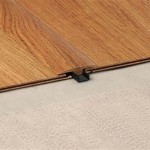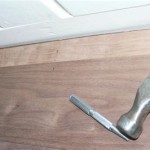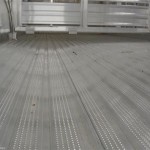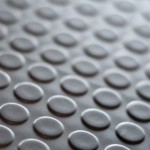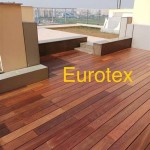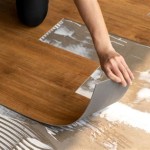Vinyl Flooring Options: A Comprehensive Guide
Vinyl flooring has emerged as a popular and versatile choice for both residential and commercial spaces. Its durability, water resistance, and relatively low cost make it an attractive alternative to traditional flooring materials like hardwood, tile, and stone. Understanding the various vinyl flooring options available is crucial for making informed decisions that align with specific needs and aesthetic preferences.
The term "vinyl flooring" encompasses a range of products, each with distinct characteristics. These differences impact aspects like durability, installation method, and overall appearance. Before selecting a particular vinyl flooring type, careful consideration should be given to the intended application, traffic levels, and desired aesthetic.
This article aims to provide a comprehensive overview of the most common vinyl flooring options, detailing their features, benefits, and drawbacks, to facilitate a more informed selection process.
Sheet Vinyl Flooring
Sheet vinyl is a continuous, rolled material that offers excellent water resistance due to its seamless installation. It is typically available in 6- or 12-foot widths, minimizing the number of seams required, especially in smaller rooms. This makes it an ideal choice for bathrooms, kitchens, and laundry rooms where moisture is a concern.
The surface of sheet vinyl typically consists of a printed design layer protected by a clear wear layer. The thickness of the wear layer is a critical factor determining the durability of the flooring. Thicker wear layers offer greater resistance to scratches, scuffs, and indentations, making them suitable for high-traffic areas.
Sheet vinyl is generally less expensive than other vinyl flooring options, contributing to its appeal. However, installation can be more challenging, often requiring professional installers to ensure a smooth, seamless finish. Proper subfloor preparation is also essential to prevent imperfections from showing through the vinyl.
While seamlessness is a major advantage, damage to sheet vinyl can be difficult to repair. Often, the entire sheet needs to be replaced if a section is significantly damaged. Therefore, choosing a higher-quality sheet vinyl with a robust wear layer is a wise investment, especially in areas prone to heavy use.
A diverse range of styles and patterns are available in sheet vinyl, mimicking the look of wood, tile, and stone. Embossed textures can further enhance the realism of these designs. The variety of choices allows for achieving a desired aesthetic without the cost and maintenance associated with natural materials.
Luxury Vinyl Tile (LVT)
Luxury Vinyl Tile (LVT) is designed to replicate the look of ceramic tile or stone with a more comfortable and warmer feel underfoot. LVT is manufactured in individual tiles, offering greater design flexibility compared to sheet vinyl. Tiles can be arranged in various patterns and layouts, allowing for customization and unique visual effects.
LVT consists of multiple layers, including a backing layer, a vinyl core, a printed design layer, and a protective wear layer. The wear layer is again a key indicator of durability. LVT products with thicker wear layers are better suited for commercial applications or high-traffic residential areas.
Installation of LVT is typically easier than sheet vinyl. Options include glue-down and click-lock systems. Glue-down LVT requires adhesive to secure the tiles to the subfloor, providing a permanent bond. Click-lock LVT features interlocking edges that allow the tiles to snap together, creating a floating floor that does not require adhesive. This makes it a popular choice for DIY projects and spaces where subfloor conditions might be less than ideal.
LVT is highly water-resistant, making it suitable for kitchens, bathrooms, and laundry rooms. The individual tile format also means that if one tile is damaged, it can be replaced without having to replace the entire floor. This repairability is a significant advantage over sheet vinyl.
LVT comes in a wide array of sizes, shapes, and styles, mimicking the appearance of various natural stone and ceramic tile options. Grout lines can be added with grout pens or by using LVT tiles that are pre-grouted, enhancing the realistic look. This provides the visual appeal of tile with the added benefits of vinyl flooring's comfort and resilience.
Luxury Vinyl Plank (LVP)
Luxury Vinyl Plank (LVP) is designed to mimic the appearance of hardwood flooring. It offers the warm aesthetic of wood without the cost, maintenance, and susceptibility to moisture damage associated with natural wood. LVP is available in various plank sizes and wood grain patterns, creating a realistic wood look.
Similar to LVT, LVP consists of multiple layers, including a backing layer, a vinyl core, a printed design layer, and a protective wear layer. The thickness of the wear layer dictates the plank's resistance to scratches, dents, and wear. A thicker wear layer is crucial for areas with heavy foot traffic or pets.
LVP installation is similar to LVT, with both glue-down and click-lock options available. Click-lock LVP is particularly popular for its ease of installation and ability to be installed over a variety of subfloors. Glue-down LVP provides a more permanent bond and may be preferred for commercial applications or areas with very high traffic.
LVP is water-resistant and can be used in areas where hardwood is not suitable, such as kitchens, bathrooms, and basements. The individual plank format allows for easy replacement of damaged planks, reducing the need for complete floor replacements.
LVP comes in a vast range of colors, wood species imitations, and plank sizes. Embossed textures can further enhance the realism of the wood grain, creating a natural look and feel. This allows homeowners to achieve the desired aesthetic of hardwood flooring without the associated drawbacks.
Specialty Vinyl Flooring Options
Beyond sheet vinyl, LVT, and LVP, several specialty vinyl flooring options cater to specific needs and applications. These options often incorporate specialized features designed to enhance performance in particular environments.
One example is static-dissipative vinyl flooring, which is designed to control static electricity in sensitive environments such as hospitals, laboratories, and electronics manufacturing facilities. This type of flooring helps prevent damage to sensitive equipment and ensures a safe working environment.
Another specialized option is slip-resistant vinyl flooring, which is engineered to provide enhanced traction and reduce the risk of slips and falls. This type of flooring is commonly used in commercial kitchens, healthcare facilities, and other areas where wet or slippery conditions are common.
Commercial-grade vinyl flooring is designed to withstand the rigors of high-traffic commercial environments. It typically features thicker wear layers and more durable construction to resist scratches, dents, and wear. This type of flooring is ideal for retail stores, offices, and other commercial spaces.
These specialty vinyl flooring options demonstrate the versatility of vinyl as a flooring material and its ability to be tailored to meet the specific needs of various applications. Consulting with a flooring professional is recommended to determine the best specialty vinyl flooring option for a particular project.
Factors to Consider When Choosing Vinyl Flooring
Selecting the appropriate vinyl flooring option involves considering several factors including the environment, traffic levels, and desired aesthetic. Carefully evaluating these factors will ensure a satisfactory and long-lasting flooring solution.
The intended location of the flooring is a primary consideration. Areas prone to moisture, such as bathrooms and kitchens, require water-resistant options like sheet vinyl, LVT, or LVP. High-traffic areas benefit from thicker wear layers to resist scratches and dents.
The subfloor condition is another crucial factor. Uneven or damaged subfloors may require preparation or the use of a floating floor system like click-lock LVT or LVP. Proper subfloor preparation is essential for ensuring a smooth and even flooring surface.
The desired aesthetic plays a significant role in the selection process. Vinyl flooring offers a wide range of styles, colors, and patterns, mimicking the look of wood, tile, and stone. Consider the overall design scheme of the space and choose a vinyl flooring option that complements the existing décor.
The budget is always a consideration. Sheet vinyl is generally the most affordable option, while LVT and LVP may be more expensive. Factor in the cost of installation, as professional installation can add to the overall expense.
Considering these factors carefully will help narrow down the options and ensure that the chosen vinyl flooring solution meets both functional and aesthetic requirements.

Types Of Vinyl Flooring The Home Depot
Everything You Need To Know About Vinyl Flooring Tarkett

Types Of Vinyl Flooring The Home Depot

Types Of Vinyl Flooring Explained Twenty Oak

Vinyl Wood Look Flooring Ideas

Best Flooring Ideas For Your Living Room America

The Best Vinyl Flooring Types Your Complete Guide Floorings

2024 Flooring Trends 20 Top Ideas This Year

2024 Vinyl Flooring Trends 20 Hot Ideas Inc

Vinyl Flooring The Home Depot
Related Posts

